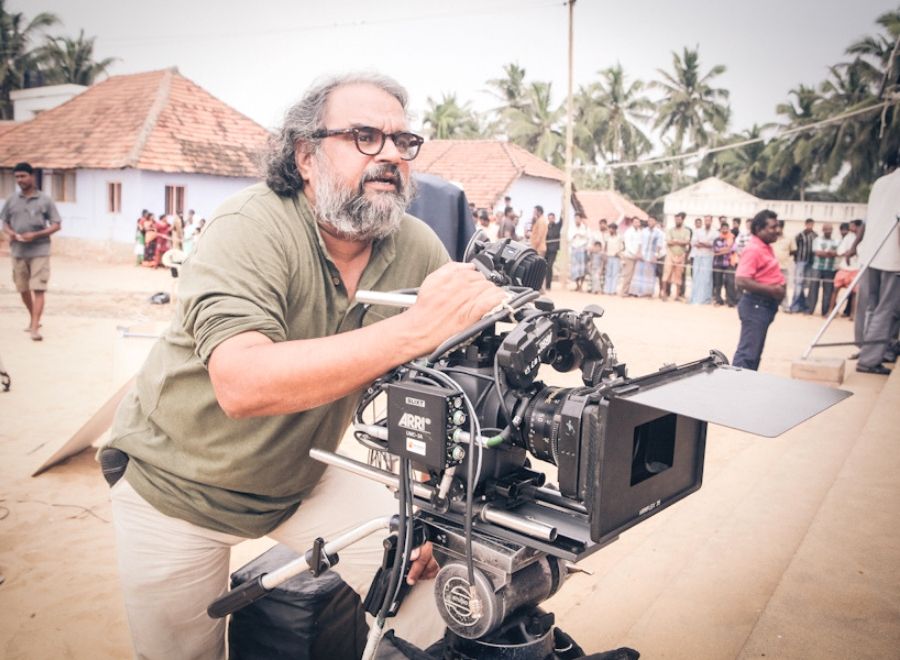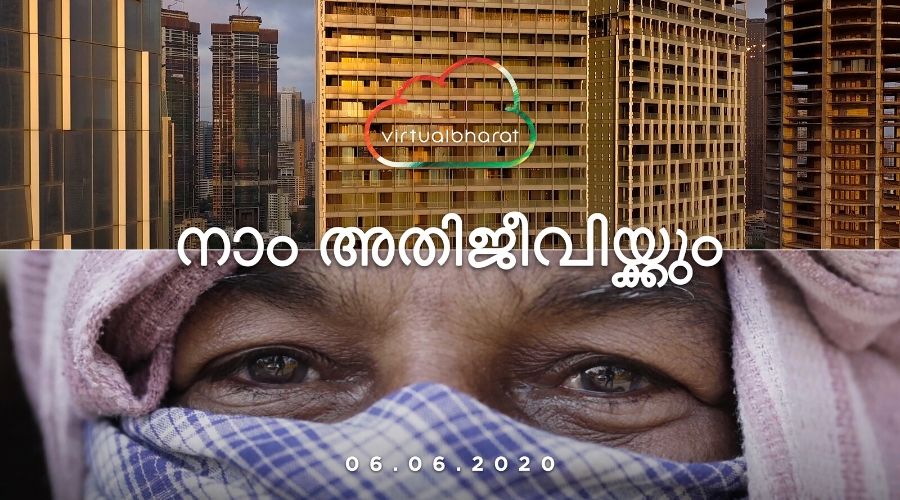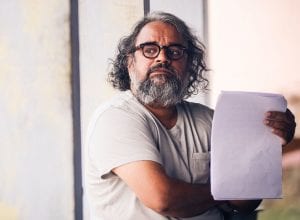
'We Will Rise': How a team of 117 filmmakers captured the locked-down India

When the streets went silent and a blanket of overpowering stillness hung over the entire country, a feisty filmmaker swung into action. On March 26, while Indians hunkered down in their homes anxious about a fatal virus, well-known filmmaker Bharatbala of Vande Mataram and Maryan (Tamil film) fame, rounded up a team of 117 filmmakers and initiated a project to capture the extraordinary visuals of India under lockdown.
The outcome has been a four-minute documentary Meendum Ezhuvom (We Will Rise Again) filmed in 14 different states of India that will release on his YouTube channel on Saturday (June 6). A more comprehensive documentary titled India in the Time of Corona will eventually be ready in a couple of months.
It seems trite to ask Bharatbala what had prompted him to film a pandemic of this proportion? He had already committed to capture and record for posterity all that is unique in India in the field of Indian history, art, music, literature through his Virtual Bharat project, an online compilation of short films. It is a digital repository that he is putting together as an ode to India—an acknowledgement of the richness and the quaint in the country.
Bharatbala has mastered the art of showcasing a captivating Bharat. As we saw in his paean to India’s tri-coloured national flag, Maa Tujhe Salaam video. Aiming to do 1,000 such films (everything in Bharatbala’s mindscape is always tuned into the mega-scale), he has already shot 85 films, and nine have been released on his YouTube channel.

In an interview with The Federal, Bharatbala says predictably, “An unprecedented, global event of such magnitude should not go unrecorded. We should do it for the sake of future generations, they need to know how this pandemic played out.” He is also being driven by a sense of creative responsibility to document India during a pandemic, he says.
“It will be a cinematic view of the tragic events that unfolded in an unbelievable, surreal manner. And, will not be in the use and throw manner in which the news channels featured the pandemic,” he points out.
Bharatbala did not travel around the country for this project. Instead, like a conductor of an orchestra, he sat in a master control room set up in Mumbai and directed the on-ground crews spread across the country on the content to be shot. Though most of the crew were familiar with his style of filmmaking having worked with him earlier, he would confirm the frames and shots via video call or WhatsApp video.
A full-fledged team in the control room worked round the clock to monitor the crews and their filming schedules. The challenges were to ensure the safety of the crew and to procure necessary permissions from government authorities.

It was largely a virtual endeavour to bring this nationwide project to life, he explains. Meendum Ezhuvom, which took 55 days to complete has been funded by the Azim Premji Foundation. “We did it on a modest budget,” claims Bharatbala.
Painting a picture of some of the startling footage the crew has captured during the lockdown, he says, the documentary has clips from inside the Amul factory in Gujarat. And, how the factory continued to operate during the lockdown to ensure milk supply was not disrupted.
In Chennai, the camera scoured the sprawling stretch of the iconic Marina beach, with not a soul out on a stroll. “There was an eerie, chilling emptiness in the white salt pans of Thoothkudi,” he says.
At Victoria Terminus station in Mumbai, which usually has thousands of commuters milling around, jostling with each other for space as they board local trains, was bereft of any person. The entire country went still, it was emptied out, he says.
“The silence was palpable, the crew recorded a lifeless station with empty metal trains just standing there. The pulsating energy and life of Mumbai had just gone,” he says.
Related Interview: I want to make crossover films like ‘Slumdog Millionaire’: Hemant Madhukar
“Where did the 1.3 billion people of India suddenly disappear during the lockdown?” asks Bharatbala.
“I think for me personally, it has been a painful, alarming and destabilizing time,” he says. But he quickly shrugs off the pessimism to add, “On the positive side, the coronavirus was a great leveller. It brought all people of different classes and castes on the same level.” It held a mirror to humanity to seek equality, and people noticed the suffering of the less privileged for the first time, he adds.
“People have also learnt to live and be content with less,” he points out. “This greed for power and material things have been brought down to its knees. Here is an opportunity to reset our lives and we need to grab it,” he says. This kind of thinking is slowly gaining traction among people but it remains to be seen if the coronavirus will leave a lasting impact on humans.
As historian and philosopher Yuval Noah Harari says, “Humanity has all the scientific knowledge and technological tools to overcome the virus. The really big problem is our own inner demons, our own hatred, greed and ignorance.”
For Bharatbala, the larger purpose behind making this documentary is not to forget the pain we went through in the past nine weeks. “We need to carry forward the pain to the other side and once all this over, we must make the right choices,” he says. He is happy if just one per cent of our population become sensitive to the harm we cause to nature.
This happened to us because nature had to heal itself, he points out. Imagine if the Ganges gets clean and becomes so transparent that one can see the pebbles on the river bed? he asks evocatively.
Related News: 40 years of ‘Nizhalgal’: A Tamil film still relevant in COVID time
In these chaotic times, the filmmaker says that he will continue to tell stories and creatively inspire people. Isn’t he the nation’s unofficial sutradhar using his well-honed craft to cleverly tell visually compelling stories, some of which are currently uploaded on his Virtual Bharat YouTube channel.
On this channel, for example, you will find a story of a little-known Adivasi poet Haldhar Nag from Orissa, who writes in his native Kosli language; there’s the account of Grandmothers in a Maharashtrian village going off to attend a village school with their school bags slung over their shoulders, only to be able to sign their own signatures; and there’s the story of Silambam, the ancient martial art of Tamil Nadu told through a graceful practitioner of the art, Aishwarya Manivannan, who is framed against moody grey sunset backdrops.
In one film, Thalaam, he chronicles Kerala’s famed snake boat races and has roped in his school-friend music wizard AR Rahman to endorse national integration by asking Indians to find a singular common rhythm to take the nation forward. Just like the way the men row collectively in a synchronized fashion on a snake boat!
His next on the Virtual Bharat online platform is a homage to Yoga, to be released on International Yoga Day this month. He’s not into stoking the nationalist pride, he clarifies. Instead, each time he tells a story about India, and makes these films, he feels a deep connection with the country, its deeply entrenched wisdom, philosophy and culture. And, by uncovering the unquenchable spirit of India, if he keeps the Bharat flag flying high, why not?


